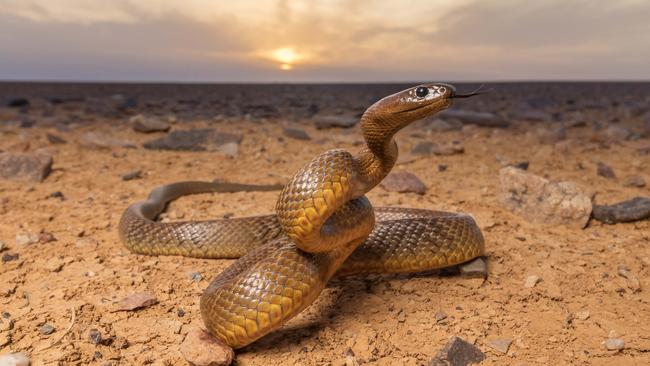Inland taipan: up close and personal with the world’s most venomous snake
Elliot Budd took a road trip across Australia to find the world’s most venomous snake. When he found it, what then?

It’s very unusual for anyone to get this close to an inland taipan. It’s a rare species, found only in a remote, sparsely populated swathe of central Australia. And even if you did stumble upon one you’d give it a wide berth, given its reputation as the world’s most venomous snake. A single bite could kill a hundred people, it’s often said. But Elliot Budd isn’t your regular traveller, and anyway, he relied on a rather low-tech but effective bit of protection to get this shot.
The 30-year-old from Townsville is obsessed with finding reptiles in the wild; he spends about 200 nights a year looking for them, mainly by driving country roads with his eyes peeled. And one of the “holy grail” species for any amateur herpetologist, he says, is the inland taipan. So when his friend and fellow snake nut Jari suggested a road trip from Perth to Brisbane to tick it off the list, of course he was in. On the desolate Moon Plain outside Coober Pedy – a hotspot for these snakes, which hunt long-haired rats in deep cracks running through the parched earth – they lucked out after three days of searching. “I was out the door before the car had even stopped,” laughs Budd.
So why is the venom so toxic? Dr Timothy Jackson of the Australian Venom Research Unit says it’s vital for the snake to dispatch a cornered rat – a dangerous opponent – swiftly. And it’s also an adaptation to the boom-bust desert cycle: when rains come and rat numbers explode, snakes can ration their venom, using the bare minimum, in order to make the most of the glut.
Oh, and Budd’s low-tech bit of protection? Not wanting to look through the viewfinder and risk a bite on the head, “I held the camera in an outstretched arm – wearing a welding glove!”

